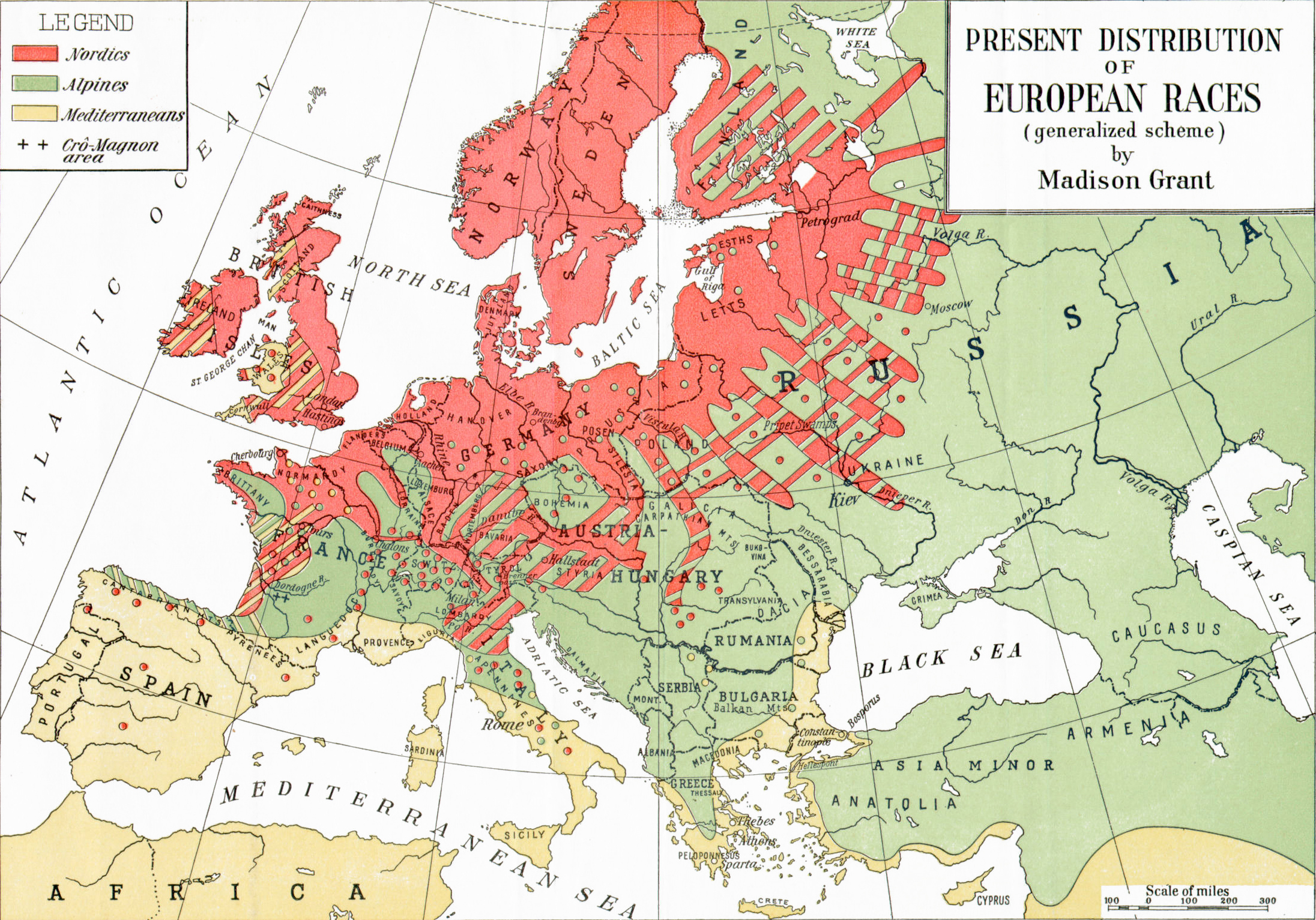People in the past were really racist. Just how racist is one
of those facts of history capable of surprising us over and over again no matter how well we think we know it.
But in addition to being surprisingly offensive, many earlier ideas
about race were also surprisingly bizarre. Whether you want to be
encouraged by how far we've come or discouraged by how far we have to
go, it is worth pausing for a minute to also reflect on just how strange
and malleable a lot of our outdated ideas about race were. That is, part of
what made racial thinking so pervasive and so effective was its
adaptibility. As in any good pseudo-science (my own interest is modernization theory), racial hierarchies could be
adjusted and re-arranged to accommodate any political goal or ideology.
As long as the right people ended up on top and the right people ended
up on the bottom, infinite variations were possible.
I'm not sure where this top map comes from, but the categories it depicts were pretty standard for its era. Like a great many other examples, it comes complete with a full complement of Europeans, Asians, Africans and Indians. The Arabs and most South Asians are European while the Turks, Hungarians and Finns are Asian. It shows the spread of European settlers, along the Amazon, the Trans-Siberian railroad and across the American west, as well as up from South Africa. What stands out is the somewhat anomalous category of "Dravidian and Oceanic," covering part of Madagascar, Southern India, Indonesia and the parts of Australia still predominantly settled by Aboriginees.
The map below is from Madison Grant's "The Passing of the Great Race." It shows an alternative scheme for people who don't want to share their elite European status with a bunch of unwashed Greeks, Italians and Spaniards (who are for their part treated as indistinguishable from Arabs). Remarkably, Turks get an upgrade in this schema. Instead of being ranked with the Mediterranean race they've become Alpine. This ambiguous category accommodates people like the Slavs or the Northern Italians who the British and Germans couldn't quite recognize as equals but who seemed to have something over the people to their south.
I'm not sure where this top map comes from, but the categories it depicts were pretty standard for its era. Like a great many other examples, it comes complete with a full complement of Europeans, Asians, Africans and Indians. The Arabs and most South Asians are European while the Turks, Hungarians and Finns are Asian. It shows the spread of European settlers, along the Amazon, the Trans-Siberian railroad and across the American west, as well as up from South Africa. What stands out is the somewhat anomalous category of "Dravidian and Oceanic," covering part of Madagascar, Southern India, Indonesia and the parts of Australia still predominantly settled by Aboriginees.
The map below is from Madison Grant's "The Passing of the Great Race." It shows an alternative scheme for people who don't want to share their elite European status with a bunch of unwashed Greeks, Italians and Spaniards (who are for their part treated as indistinguishable from Arabs). Remarkably, Turks get an upgrade in this schema. Instead of being ranked with the Mediterranean race they've become Alpine. This ambiguous category accommodates people like the Slavs or the Northern Italians who the British and Germans couldn't quite recognize as equals but who seemed to have something over the people to their south.






